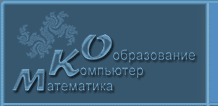|
|
Архив публикацийТезисыXVII-ая конференцияExperimental study and mathematical modeling of antioxidant system in rats with ascitic Zajdel hepatomaInstitute of Theoretical and Experimental Biophysics RAS, Institutskaya street, 3, Pushchino, 142290, Russia Novosibirsk State University, Pirogov street 2, Novosibirsk, 630090, Russia, ivan@systemsbiology.ru Institute of Systems Biology, Ltd, Detskiy proezd 15, Novosibirsk, 630090, Russia, Institute of Cytology and Genetics SB RAS, Novosibirsk, 630090, Russia Design Technological Institute of Digital Techniques SB RAS, Novosibirsk, 630090, Russia 1 стр. (принято к публикации)It is known that tumor development leads to innate immunity activation and oxidative stress which affect many physiological functions. In this study we measured the dynamics of antioxidant components in blood plasma and ascitic fluid in the process of tumor development. As the model of tumor development we used ascitic Zajdel hepatoma transplanted into peritoneal cavity of Wistar rats. Recently elaborated biochemical, spectral and immune assays methods were applied to follow concentrations of individual antioxidants, reactive oxygen species, metabolites and regulatory protein in dynamics. We observed a reverse dynamics of several parameters (reactive oxygen species generation capacity of phagocytes; transferrin, ceruloplasmin, uric acid, alpha-tocopherol concentrations) related to oxidative stress in blood and ascitic fluid [1]. We revealed experimentally that oxidative stress induced enhancement of antioxidant defence (e.g., ceruloplasmin increase) in blood, but not in ascites. We hypothesised that such dynamics can be at least partially explained by the fluid redistribution and passive transport between blood plasma and ascites. To check this hypothesis we developed the mathematical model of passive transport between blood plasma and ascites. It takes into account the transport of fluids, proteins (e.g., transferrin, ceruloplasmin) and low molecular weight antioxidants (uric acid and alpha-tocopherol). BioUML workbench (http://www.biouml.org) was used for the formal description and simulation. All collected data including semantic diagrams and mathematical models were deposited in the BMOND database (http://bmond.biouml.org, DGR0355_1-DGR0355_9). The values of model parameters were either obtained from literature or calculated from experimental data. The time courses of ceruloplasmin, transferrin and uric acid in plasma and in ascites were simulated. The trends of simulated time courses represent qualitatively the experimental dynamics. Further model development is needed to describe the dependence of the plasma-ascites transfer on dynamics of inflammatory stimuli, oxidative stress and antioxidant capacity of the physiological fluids studied. |

